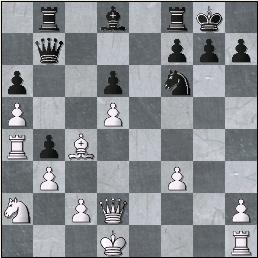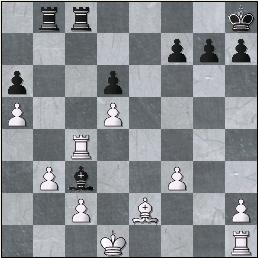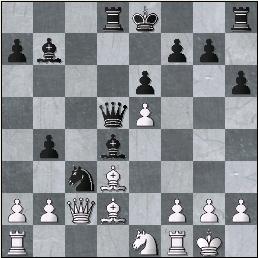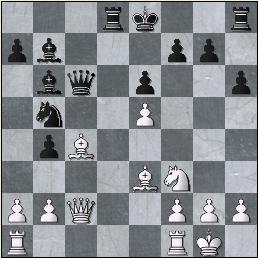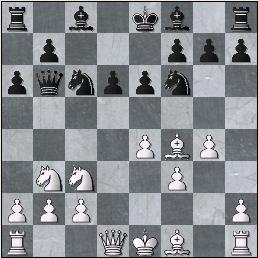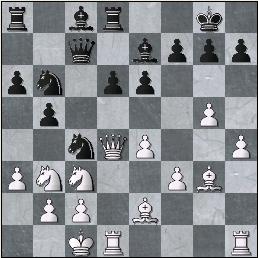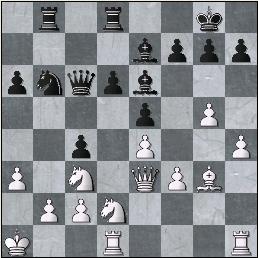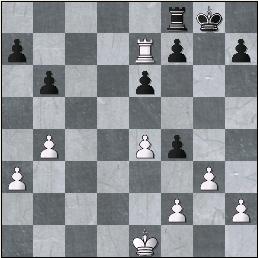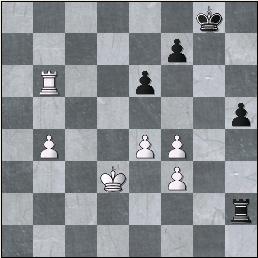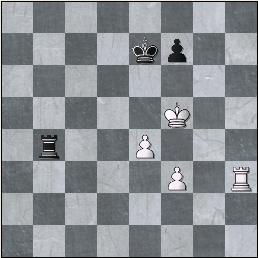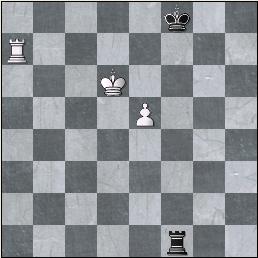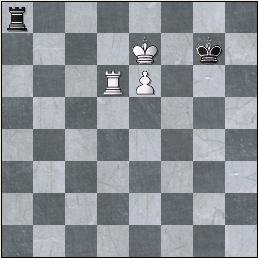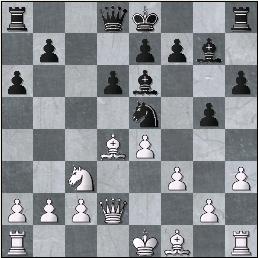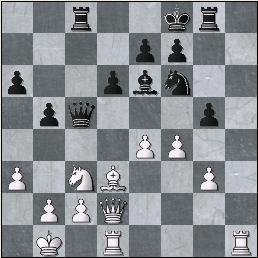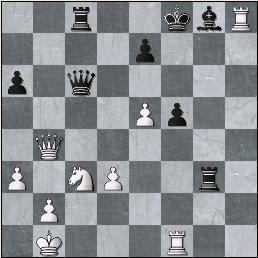13.11.2006
TAL MEMORIAL. GAMES OF ROUND 6 COMMENTED
Round 6 reveals growing fatigue of players. Tensed games exhaust, but psychological pressure of opposing an elite player every round exhausts even more.
Shirov,A (2720) - Ponomariov,R (2703) [B90]
Tal Memorial Moscow RUS (6), 12.11.2006
1.e4 c5 2.¤f3 d6 3.d4 cxd4 4.¤xd4 ¤f6 5.¤c3 a6 6.Ґe3 e5 7.¤b3 Ґe6 8.f3 ¤bd7 9.Јd2 b5 10.a4 b4 11.¤d5 Ґxd5 12.exd5 ¤b6 13.Ґxb6 Јxb6 14.a5 Јb7 15.Ґc4 Ґe7 a decent modern alternative is to develop the bishop in the other direction:15...g6
16.¦a4 ¦b8 17.Јd3 ¦a8 18.Јd2 ¦b8 19.¤c1 Ґd8 20.b3 0-0 After the games adversaries claimed that they both forgot the exact move order somewhere here. 21.¤a2 e4 22.ўd1 Shirov after the game expressed an opinion that 22.¤xb4 is perhaps more precise.
22...exf3 23.gxf3 The positions of this line seem to me rather difficult to be played. With opposite coloured bishops on the board, black has compensation for the pawn b4 that they always lose eventually, and whatever happens with the evaluation, he will always have some tricks, yet he has to bear in mind that he is doomed in most of the endgames due to a week a6 pawn. White from the other hand faces a task of consolidation of his quite scattered position.
23...¤d7 23...Јc8 24.¤xb4 Јh3 25.¦f1 ¤d7 26.¤c6 Sax-Dzevlan, Stockholm 1997 As one advertisement says, feel the difference. 24.¦xb4 Јc7 It`s not that easy to understand the idea of this move in comparison to 24...Јc8. Probably black wants to keep an opportunity of winning back the pawn on a5 after 25.¦xb8 ¤xb8 – in some case the resulting endgame is worse, in some not, meanwhile the main threat will be Јc7-c5-(a3)
25.¦a4 Јc8 26.Ґe2 After 26.¤b4 white is close to carry out one of his main ideas – improving the knight. Black obtains counterplay in the center the following way: 26...¤c5 27.¦a3 Јf5 28.¦f1 Ґg5 29.f4 Ґf6 26...¤c5 27.¦g4 After 27.¦a3 Јf5 black has too many ideas: Ґg5, Јe5, ¦e8-e5; 27.¦c4 seemed to be a reasonable alternative. 27...Ґf6 This move prevents ¤a2-b4-c6 by means of no just a tactical trick but a correct evaluation of the resulting endgame. More primitive 27...Јf5 seems to serve the same task: 28.¤b4 Ґxa5 29.¤c6 ¤xb3! 30.cxb3 Јb1+ 31.Јc1 Јxb3+ and draw by a perpetual. 28.¤b4
After 28.¦hg1 Јf5 29.¤b4 ¤xb3 doesn`t work,29.b4 is possible but hinders consolidation. But we have to mention 29.¦g5!?If black accepts the sacrifice (otherwise white may continue 30.¦h5 taking away some space from black) 29...Ґg5 30.Јg5 Јg5 31.¦g5 white has enough compensation in the endgame. Amazing is the fact that this sacrificed is favoured by computer! 28...¤a4! 29.¤c6 ¤c3+ 30.Јxc3 Ґxc3 31.¤e7+ ўh8 32.¤xc8 ¦fxc8 33.¦c4
Shirov offered draw here and affirmed after the game that his position is somewhat worse. It`s astonishing at the first sight but probably correct evaluation. It`s not so easy for white to unbind his position. If we make some most natural moves 33.¦c4 ¦xc4 34.Ґxc4 ¦e8 35.Ґxa6 Ґxa5 36.Ґb5 ¦e3 (36...¦e5 37.c4 ¦e3 38.ўc2 ¦c3+ 39.ўb2 ¦xf3 40.ўa3 leads to a sharp position.) 37.Ґe2 g6 38.¦f1 ўg7 39.f4 ¦e4! (important idea) white`s having some problems become obvious. 1/2-1/2
Mamedyarov,S (2728) - Gelfand,B (2733) [D47]
Tal Memorial Moscow RUS (6), 12.11.2006
1.d4 d5 2.c4 c6 3.¤c3 ¤f6 4.e3 e6 5.¤f3 ¤bd7 6.Ґd3 dxc4 7.Ґxc4 b5 8.Ґd3 Ґb7 9.e4 b4 10.¤a4 c5 11.e5 ¤d5 12.¤xc5 ¤xc5 13.dxc5 Ґxc5 14.0-0 h6 15.¤d2 ¤c3 Less active moves 15...0-0 and 15...Јc7 are no less popular 16.Јc2 Јd5 17.¤f3 ¦d8 18.¤e1 Ґd4 19.Ґd2
A very good for its time (published 1985) book "Slav defence" by Kondratiev gives exactly this diagram with the following conclusion: "Black`s initiative reached a deadlock." I still remember how striking for my childish perception seemed that time the difference between black`s active disposition and its objective evaluation. But although the initiative was indeed temporary, the position is not so bad for black, as Gelfand proves with precise moves.
19...¤b5 19...¤e4?! is wrong: 20.Ґxb4 Ґxe5 21.¦d1 Ґd4 (21...¤g5 22.a4!+- Vaganian-Bergez, BEL(chT)2002) 22.Јe2 a6 23.Ґxa6 Ґxa6 24.Јxa6 Dautov-Dreev, U¦S-ch U26 1989. It`s important to add that 24...¤xf2 fails to 25.¦xd4
20.¤f3 A novelty. It is no surprise for us that that Gelfand knew the games mentioned in the antique book: 20.Ґxb4 Ґxe5 (20...Ґb6 21.Јc4 ¤d4 22.Јxd5 ¦xd5 23.Ґd6 Polugaevsky-Mecking, Manila 1975, white is better) 21.¦c1 (21.Ґc4 ¤d4; 21.¦d1 ¤d4) 21...Ґd6 22.Јa4 a6 23.Ґxd6 ¦xd6= with an equal game, Magerramov-Bagirov, Baku 1976 20...Ґb6 20...Ґxf2+ 21.¦xf2 Јxd3 22.Ґxb4 could disconnect black rooks for good.
21.Ґc4 Јc5 A subtle decision. After 21...Јc6 22.Ґxb4 ¤d4 23.Јc3 ¤xf3+ 24.gxf3 black`s position with a king in the center looks attractive neither after 24...¦d4 25.Ґe2 Јd5 nor after24...Ґd4 25.Јb3 Ґxe5 26.¦fd1 22.Ґe3 Јc6
23.Јe2 Black minor pieces position definitely distinguishes this games from many other played by Merano variation. White should not try to grab a pawn by 23.Јb3 0-0 (23...Ґxe3 24.fxe3 a5 25.a3) 24.Јxb4: after 24...¤d4 25.Ґxd4 ¦xd4 he is in a severe trouble. 23...¤c7 24.¦ac1 Ґxe3 25.fxe3!? 25.Јxe3 Јb6 25...0-0 26.Ґd3 Јb6 27.¤d2 Ґa6 28.Ґxa6 Black position is somewhat preferable.1/2-1/2
Svidler,P (2750) - Grischuk,A (2710) [B90]
Tal Memorial Moscow RUS (6), 12.11.2006
1.e4 c5 2.¤f3 d6 3.d4 cxd4 4.¤xd4 ¤f6 5.¤c3 a6 6.Ґe3 ¤g4 7.Ґc1 ¤f6 8.f3 Јb6 9.g4 ¤c6 10.¤b3 e6 11.Ґf4 I failed to find this idea in my databases.
11...Јc7 12.Јd2 ¤e5 13.Ґe2 Ґe7 14.Ґg3 b5 15.g5 ¤fd7 15...¤h5 would be wrong way:16.f4 (16.Ґf2) 16...¤c4 (16...¤xg3 17.hxg3 ¤c6 18.0-0-0) 17.Јd4 ¤xg3 18.hxg3 Opening of h-file compensate for white the lack the dark-squared bishop.
16.h4 ¤b6 17.Јd4 0-0 18.0-0-0 ¦d8 19.a3 ¤ec4 It seems that white`s opening experiment failed. Maybe 20.f4 can be recommended in terms of equalization.
Svidler tries to exchange the annoying knight, but this only increases his problems.20.Ґxc4 bxc4! 20...¤xc4 21.¤d2
21.¤d2 e5! Black`s evaluation is correct. Positionally white would have been fine, but for his king. 22.Јe3 The knight will never take this so desired for it square. I could nt find any grounds for leaving it unoccupied by 22.Јg1 ¦b8 (22...Ґe6) 23.Ґf2, black can even launch d6-d5 immediately.23...d5 24.Ґxb6 ¦xb6 25.exd5 Ґf5
22...Ґe6 23.ўb1 ¦ab8 24.ўa1 Јc6
25.¦b1 Grischuk considers this to be a decisive mistake and recommends 25.¤db1 as the only way to hold.
25...¤a4 26.¦hd1 After 26.¤f1 ¦d7 white has no time to move the knight e3 anyway;another problems reveals after immediate f3-f4: 26.f4 d5! 27.exd5 Ґxd5
26...¦d7 27.f4 exf4 28.Ґxf4 ¦db7 29.¤xa4 Јxa4 30.Јc3 g6
Black adds Ґe7-f8-g7 to his arsenal. Straightforward 30...¦b5 was less efficient.
31.h5 According to Grischuk 31.Ґe3 was more tricky to be refuted, yet he claims 31...¦b5 must eventually win 32.Ґa7 ¦8b7 33.Ґd4 ¦a5 etc. 31...Ґd8 looks not so bad either; It`s important that white cannot move his knight useless at this moment, for example: 31.¤f1 ¦b3!
31...gxh5 32.¦h1 Ґf8 33.¦xh5 Ґg7 34.e5 d5 /\Ґf8 35.Ґe3 Ґf5! direct 35...Ґf8 36.Ґd4 Ґb4 37.Јe3 c3 (37...Јxc2) 38.Ґxc3 Ґxa3 would also win if black finds after 39.b3 move 39...¦xb3! 40.cxb3 ¦xb3, but Grischuk`s move avoids any adventures.
36.Ґd4 Ґxc2 37.e6 Ґxb1 38.¤xb1 fxe6 0-1
Aronian,L (2741) - Carlsen,M (2698) [E15]
Tal Memorial Moscow RUS (6), 12.11.2006
1.d4 ¤f6 2.c4 e6 3.¤f3 b6 4.g3 Ґa6 5.Јc2 ¤c6 It`s sad that this sideway deprives us of a chance to see what improvement Aronian prepared to his game against Leko. 6.¤bd2 6.a3 Ґb7 clarifies to some extent black`s idea. After freestyle continuation 7.Јd3 e5 8.dxe5 ¤xe5 9.¤xe5 Ґxh1 10.f3 Ґd6 white spent the rest of the game at the verge of losing in ўortschnoi-Kachiani Gershinska, Willingen 1999
6...d5 7.cxd5 Јxd5 8.e4 ¤b4 9.Јa4+ Quiteaccording to the common rule, the youth is to be eliminated in the endgame. The approach eventually justified itself, but after the game Levon claimed 9.Јb1 to be a significant improvement. After 9...Ґxf1 10.ўxf1 wherever the queen retreated, black would have all the grounds to regret much earlier the dubious choice in the opening.
9...Јd7 10.Јxd7+ ¤xd7 11.Ґxa6 ¤xa6 12.0-0 ¤f6 13.a3 c5 14.¦e1 Ґe7 after 14...cxd4 15.b4 ¦d8 16.Ґb2 d3 17.¦ad1 d3 pawn falls sooner or later, while problems with the knight a6 persist. 15.¤e5
15...¦c8 15...cxd4 16.b4 ¤c7, improving the mischievous knight was the first chance to solve opening problems. 16.b4 cxd4 According to Aronian, black had to dare for 16...cxb4 17.axb4 ¤xb4 18.¦xa7 ¤c2 After 19.¦d1 ¤xd4 20.¤dc4 ¤b5 (after 20...¤e2+? 21.ўf1 ¤xc1 22.¤xb6 black is suddenly defenceless) 21.¦b7 Ґc5 22.¦xf7 or 20...Ґc5 21.Ґe3 0-0 22.Ґxd4 ¦fd8 complications arose. Now that black missed the second opportunity to change the course of events, he is to face an unpleasant defensive task.
17.¤df3 ¤b8 18.¤xd4 ¤fd7 19.¤ef3 19.Ґf4 led probably to the game after 19...g5 (19...0-0 20.¤xd7 ¤xd7 21.b5 and standard for this structure c6-square weakness is unpleasant for black) 20.¦ac1 0-0 21.¤xd7 ¤xd7 22.¤c6
19...0-0 20.Ґf4 ¤c6 21.¦ac1 ¤xd4 22.¤xd4 g5 23.¤c6! 23.Ґc7 ¤c5 led nowhere 23...¦xc6 24.¦xc6 gxf4 25.¦c7 ¤e5 After25...fxg3 white may think of playing an exchange up after 26.¦d1!? besides obvious26.hxg3 ; after 25...¦d8 26.¦d1 ¤f8 27.¦xd8 Ґxd8 28.¦xa7 two minor pieces are clearly weaker than white rook and a mighty passed pawn "a".
26.¦xe7 ¤f3+ 27.ўf1 ¤xe1 28.ўxe1
Black would be doomed to passive defence but for his brave f4-pawn. It`s a typical "desperator", creating some mess in the opponents camp while the main forces are solving the major tasks. 28...a5! 29.¦b7 After 29.bxa5 bxa5 30.¦a7 (30.gxf4 ¦c8) 30...¦d8 31.¦xa5 f3 it cannot be seen how white can improve the position.
29...axb4 30.axb4 ¦d8 31.f3! White kept b4 pawn instead of a3 to have this opportunity. 31...¦d3 passivity like31...fxg3 32.hxg3 ¦d6 33.ўe2 in rook endgames often leads to a disaster. 32.ўe2 ¦b3 33.¦xb6 ¦b2+ 34.ўd3 ¦xh2 34...¦b3+ 35.ўc4 ¦xf3 36.b5 35.gxf4 h5
36.¦b5 White eventually won a pawn, but white seems unable to avoid an exchange of h5 and b4 pawns. After the game Aronian blamed his last very natural move, but it`s hard to suggest an improvement. 36...h4 37.¦h5 h3 38.ўd4 ўf8 39.ўe5 ўe7 40.f5 exf5 41.ўxf5 ¦b2 42.¦xh3 ¦xb4
43.f4 ¦b5+ 44.e5 ўf8 45.¦d3 ¦b4 46.ўg5 ўg7 47.¦d7 ¦b5 48.ўg4 ўf8 49.ўf5 ўg7 50.ўe4 ¦b4+ 51.¦d4 ¦b1 52.¦d7 ¦e1+ 53.ўd5 ¦d1+ 54.ўc6 ¦f1 55.¦d4 ўf8 56.ўd7 ¦f2 57.ўd6 ¦f1 58.ўd5 ўe7 59.¦a4 f6 60.¦a7+ ўf8 61.ўd6 61.ўe6 ¦xf4 62.¦f7+ ўe8 63.¦xf6 ¦a4 61...fxe5 those curious may analyze61...¦xf4?? 62.¦a8+ ўg7 63.e6 ¦d4+ 64.ўc6 ¦e4 65.ўd7 ¦d4+ 66.ўe8 ¦h4 to decide whether it`s losing for black or not.
62.¦a8+ ўf7 63.¦a7+ ўf8 64.fxe5
In swiss tournaments with time controls without an increment most GMs are likely to call an arbiter and demand a draw in this position...
64...¦d1+ 64...¦e1 65.ўe6 ¦e2 65.ўe6 ¦e1 66.¦f7+ ўe8 67.¦h7 ўf8 68.¦h8+ ўg7 69.¦d8 ¦a1 It is more precise to switch to sideway checks after forcing the rook to e8: 69...¦e2 70.¦e8 ¦a2! This method saves black in ¦+e/d pawn vs rook endgame even when the king is on the wrong side. 70.ўe7 ¦a5 71.e6 ¦a7+ 72.¦d7 ¦a8 It`sworldwide known here: "any move on a-file but not on a6..." 73.¦d6
And now 73...ўg6= is the only move...Another waiting move 73...¦b8 is allowed only with the f-pawn, and loses here to 74.¦d2 ¦b7 75.¦d7 and 76.¦a7! etc.
73...¦a7+74.ўe8 1-0
I think the finish of this game illustrates more than clearly how chess changed with the advance of the computers. I leave it to everyone to make his own conclusions himself.
Leko,P (2741) - Morozevich,A (2747) [B90]
Tal Memorial Moscow RUS (6), 12.11.2006
1.e4 c5 2.¤f3 d6 3.d4 cxd4 4.¤xd4 ¤f6 5.¤c3 a6 6.Ґe3 ¤g4 7.Ґg5 h6 8.Ґh4 g5 9.Ґg3 Ґg7 10.h3 ¤e5 11.f3 ¤bc6 12.Ґf2 ¤xd4 13.Ґxd4 Ґe6 14.Јd2
14...Ґf6 The position is famous due to the game Akopian-Kramnik, Wijk aan Zee 2004, where after 14...Јa5 15.a3 0-0 16.h4 ¤g6 17.hxg5 hxg5 18.b4 Јc7 Vladimir playing white took Vladimir playing black aback with 19.¤e2!? It`s already boring to repeat Morozevich prefers his own way.
15.0-0-0 ¦c8 16.ўb1 ¦g8 17.Ґe2 ¤d7 18.Ґxf6 ¤xf6 19.h4 The evaluation is white is somewhat better.
19...Јb6 19...Јa5 is an option. After 20.hxg5 hxg5 21.a3 (21.¤d5 Јxd2 22.¤xf6+ exf6 23.¦xd2 ўe7 is drawish) transferring the king to a queenside is though somewhat overcreative yet quite possible: 21...ўd8 (21...¦c6) 22.¦he1 ¦c7 Morozevich has enough grounds to hope for his queen to be more useful on a7-g1 diagonal.
20.hxg5 hxg5 21.a3 ўf8 /\Јf2 22.Ґd3 Јc5 23.g3 b5 24.f4
24...¤g4 white`s threat becomes obvious after, say, 24...¦b8 25.e5 dxe5 26.fxg5+-;an interesting try could be immediate 24...b4!? 25.axb4 (it`s important that 25.¤a4 Јd4 26.Јxb4 Јxb4 27.axb4 gxf4 28.gxf4 ¦b8! doesn`t win a pawn) 25...Јxb4 26.fxg5 ¦b8 (26...¤g4 27.¤d5 Јxd2 28.¦xd2 ¤e5 29.Ґxa6 ¦c6 30.¤b4 ¦b6 31.c3 ¦xg5 with some compensation looks less attractive) 27.b3 Јa3 (27...¤g4 28.g6 a5!?) 28.Јc1 Јxc1+ 29.ўxc1 ¦xg5 30.¦h8+ ¤g8 and black defends successfully.
25.¦de1 b4?! This decision looks dubious to me, black had a number of relatively reliable alternatives: 25...¤f2 26.¦h7 ¤xd3; 25...¦b8; 25...Јf2!?
26.¤a4 Јc6?! Certainly a strange choice, after26...Јd4 27.Јxb4 Јxb4 28.axb4 ¤f2 black plays ¦b8 after the exchange on d3 winning back b4 pawn with good hopes to equalize.
27.Јxb4 ¤f2 28.¦h2 ¤xd3 29.cxd3 gxf4 30.gxf4 f6 31.¤c3 ¦g3 32.e5 dxe5 33.fxe5 f5 34.¦h8+ Ґg8 35.¦f1
White`s big advantage is obvious, but the realization problems are rather serious.It should be mentioned that after 35.Јf4 ¦g2 white had no time to take on f5: after 36.Јf5?! ўg7 black treatens with both ¦xb2 and Ґa2 (after 37.¦fh1)
35...Јe6?! Black`s defensive task is difficult. Morozevich sends his king to a wrong direction meanwhile losing a second pawn. 35...ўe8! was much more persistant. After, for example, 36.d4 Јe6 37.Јa4+ black king should go left: 37...ўd8 with some hopes. The rest was a matter of technique. I mean it was a matter of technique for Leko.
36.¦h5 ўg7 37.¦hxf5 ¦g2 38.Јb7 ¦g3 39.¦5f3 ¦g5 40.d4 ¦d8 41.Јe4 Јg4 42.¦f4 Јg2 43.ўa1 Ґc4 44.¦c1 Јxe4 45.¦xe4 ўg6 46.¦f4 Ґb3 47.¤e2 Ґa4 48.¦f2 ¦g4 49.d5 ¦h8 50.¤f4+ ўf5 51.¤d3+ ўg6 52.¤c5 Ґb5 53.¤xa6 ¦h5 54.¤c7 Ґa4 55.e6 Ґb3 56.¦f3 Ґxd5 57.¤xd5 ¦xd5 58.¦c7 ¦b5 59.¦f2 1-0

